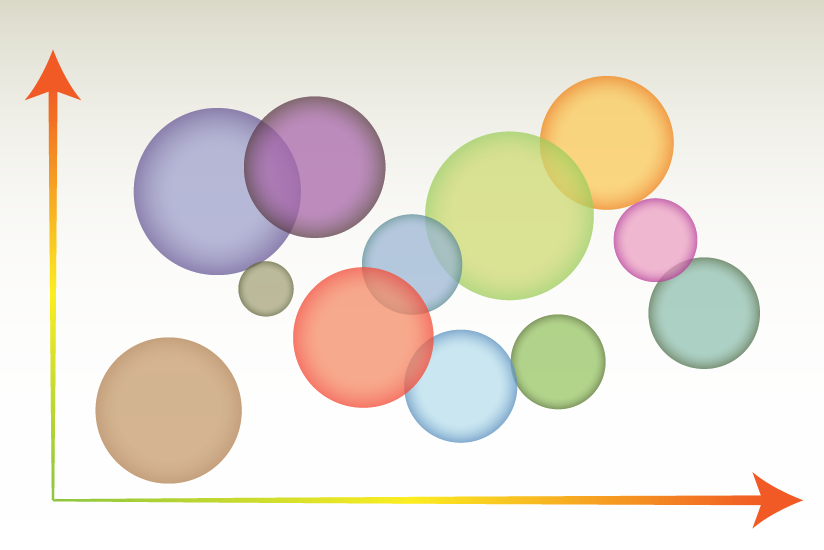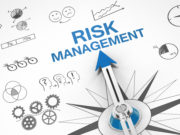
Traditional ways of classifying aviation occurrences as accidents and serious incidents do not necessarily provide an accurate assessment of the risks of these events, the European Aviation Safety Agency (EASA) says. As an alternative, EASA has developed the European Risk Classification Scheme (ERCS), designed to risk-classify all reported occurrences.
The development and use of ERCS was required by the European Parliament’s Regulation 376/2014, which called for development of a method of risk classification that would “facilitate an integrated and harmonised approach to risk management across the European aviation system and thus enable organisations, member states, the [European] Commission and [EASA] to focus on safety improvement efforts in a harmonised manner.”
The resulting ERCS calls for the risk classification of all aviation accidents and serious incidents that are reported to European authorities, with the primary purpose of risk scores “to be able to discriminate between the occurrences with a high and lower associated risk,” EASA said in its Annual Safety Review 2018,1 released in August.
Additional information on the ERCS methodology is expected to be published by the European Commission later this year, according to the report.2
Noting the shortcomings of traditional risk assessment methods that rely on classifications of accidents and serious incidents, the report explained that ECRS risk scores are designed to identify the relatively higher and lower risks associated with various occurrences.
“As example,” the report added, “a very close near-miss [of two aircraft in flight] would be classified as a serious incident, while a collision between ground handling vehicle and an aircraft leading to substantial damages of the [latter] would be classified as an accident. It is clear that in terms of risk, the serious incident in this example would be higher than the accident.”
The document included a series of graphics that illustrated the depiction of accidents and serious incidents according to ERCS. For example, Figure 1 shows that, in 2017, commercial air transport (CAT) airlines were involved in 103 higher risk occurrences and 11 lower risk occurrences.
Figure 1 — Accidents and Serious Incidents by Higher and Lower ERCS Score for CAT Airline Operations, 2013–2017
CAT = commercial air transport; ERCS = European Risk Classification Scheme
Source: European Aviation Safety Agency
The 2017 higher risk occurrences outnumbered those recorded in any other year in the five-year period from 2013 through 2017, and combined, the higher and lower risk occurrences in 2017 represented the second highest number recorded in the five-year period. The 2017 total of 114 combined occurrences marked a decrease from the 2016 total of 125, however.
When noncommercial complex (NCC) business aircraft accidents and serious incidents were evaluated according to the ERCS, all five serious incidents recorded in 2017 were classified as higher risk occurrences (Figure 2). In the five years from 2013 through 2017, three occurrences — all in 2016 — were the only ones classified as lower risk.
Figure 2 — Accidents and Serious Incidents by Higher and Lower ERCS Score for NCC Business Aircraft, 2013–2017
ERCS = European Risk Classification Scheme; NCC = noncommercial complex
Source: European Aviation Safety Agency
Safety Risk Portfolio
Eventually, CAT airlines and NCC business aircraft operations registered in EASA member states will be included in a single safety risk portfolio, determined by applying the ERCS. The risk portfolio will contain “a summary of the top risk areas and safety issues” for this segment of the aviation industry, the report said. Other safety risk portfolios will be developed for other segments of the industry.
In the 2018 Safety Review, however, a data portfolio reflects the results of the review of 2013–2017 data that established the links between each occurrence and key risk areas and safety issues. The report described this data portfolio as an intermediate step leading toward creation of the final safety risk portfolio.
“The data portfolio is used to identify a reduced number of key risk areas for which an in-depth analysis will be carried out to determine the completeness of safety issues that have contributed to those risk areas and to assess the level of control over the most relevant safety issues,” the report said. “This assessment would consider the increase/decrease of exposure to the relevant hazard, the effectiveness of existing controls and the expected risk reduction by committed safety actions.”
The assessment also would incorporate expertise from EASA operational departments and Collaborative and Analysis Groups, which provide assessments of safety risks, the report said, adding that this input would enable development of the final safety risk portfolio.
Figure 3 is the data portfolio for CAT airlines and NCC business aircraft operations from 2013 through 2017. It uses ERCS scores to develop an initial ranking of key risk areas and safety issues.
Figure 3 — Distribution of Key Risk Areas by Frequency and Aggregated ERCS Risk Score for CAT Airlines and NCC Business Aircraft, 2013–2017
CAT = commercial air transport; ERCS = European Risk Classification Scheme; NCC = noncommercial complex
Source: European Aviation Safety Agency
Figure 4 incorporates associated fatalities, using the size of each bubble to depict the aggregate risk score associated with each risk type.
Figure 4 — Distribution of Key Risk Areas by Fatalities, Number of Higher-Risk Occurrences and ERCS Risk Score for CAT Airlines and NCC Business Aircraft, 2013–2017
ERCS = European Risk Classification Scheme; NCC = noncommercial complex
Source: European Aviation Safety Agency
“From these two representations, it can be concluded that the key risk areas accumulating higher risk score[s], based on the occurrence data used, are runway excursion and aircraft upset,” the report said.3
Data Sorting
Table 1 shows a portion of EASA’s safety risk portfolio, with a depiction of how the 2013–2017 occurrence data relate to safety issues and their outcomes. The top portion of the figure contains columns listing key risk areas, based on their ERCS scores, for the five-year period. The risk areas include both the undesired outcomes (accidents) and their immediate precursors, which the report characterized as, in most cases, less severe occurrences.
| Bands of aggregated ERCS risk score (2013–2017) | Priority 1 | Priority 2 | Priority 3 | Priority 4 | Under Evaluation |
|---|---|---|---|---|---|
| Safety Issues | Key Risk Areas (precursors and outcomes) | ||||
| Aircraft Upset | Runway Excursion | Injuries/ Damage | Runway Collision | Airborne Collision | |
| Key: L = a significant number of occurrences; S = a small number of occurrences
ACAS RA = airborne collision avoidance system resolution advisory; CAT = commercial air transport; CRM = crew resource management; ERCS = European Risk Classification System; ILS = instrument landing system; NCC = noncommercial complex; RPAS = remotely piloted aircraft systems; UAS = unmanned aircraft systems *Depicting the relationship between 2013–2017 occurrence data and safety issues and their outcomes (relative to risk, in descending order) Source: European Aviation Safety Agency |
|||||
| Perception and situational awareness | L | S | S | L | L |
| Monitoring of flight parameters and automation modes | L | L | S | S | |
| Approach path management | L | L | L | S | S |
| Convective weather (turbulence, hail, lightning, ice) | L | S | L | S | |
| Icing in flight | L | S | |||
| Mental health | |||||
| Handling of technical failures | L | L | L | S | |
| CRM and operational communication | L | S | S | S | S |
| Braking and steering | L | L | |||
| Flight planning and preparation | L | L | S | S | |
| Experience, training and competence of individuals | S | S | S | S | |
| Runway surface condition | L | S | |||
| Crosswind | S | S | S | S | |
| Deconfliction with aircraft not using transponders | L | ||||
| ACAS RA not followed | S | ||||
| Inappropriate flight control inputs | S | S | S | S | |
| Taxi speed and directional control | S | ||||
| Knowledge of aircraft systems and procedures | L | S | S | ||
| Alignment with wrong runway | S | S | S | S | |
| Fatigue | S | S | |||
| Wake vortex | S | S | |||
| Clear air turbulence and mountain waves | S | L | |||
| Entry of aircraft performance data | L | L | |||
| Fumes effects | S | S | |||
| Aircraft maintenance | L | S | S | ||
| Decision making and planning | S | S | S | ||
| Icing on ground | S | S | S | ||
| Slow rotation at takeoff | S | S | |||
| Airborne separation RPAS | S | ||||
| Wind shear | S | S | S | ||
| Baggage and cargo loading | S | ||||
| False or disrupted ILS signal capture | S | S | S | ||
| Gastronintestinal illness | S | ||||
| Transport of lithium batteries | S | ||||
| Handling and execution of go-arounds | S | S | |||
| Bird/wildlife strikes | S | ||||
| Personal pressure and arousal | S | S | |||
| Supporting information to the flight crews | |||||
| Tire pressure condition | |||||
| Disruptive passengers | |||||
| Effectiveness of safety management | |||||
| Fuel contamination | Under evaluation | ||||
| Laser illumination effects | Under evaluation | ||||
| Fuel management | Under evaluation | ||||
| Nonprecision approaches | Under evaluation | ||||
| Safety culture | Under evaluation | ||||
| Damage tolerance to UAS collisions | Under evaluation | ||||
The rows beneath the key risk areas list safety issues “based on the aggregated ERCS score of … occurrences where those safety issues were present,” the report said. The section of larger and smaller dots (derived from the relative number of related occurrences) is designed to show the relationship between safety issues and key risk areas.
For example, in the key risk area of aircraft upset, primary safety issues include perception and situational awareness, monitoring of flight parameters and automation modes, approach path management, convective weather, icing in flight, and handling of technical failures.
Runway excursion key risk areas include approach path management, monitoring of flight parameters and automation modes, handling of technical failures and braking and steering.
Offshore Helicopters
A similar safety analysis for offshore CAT rotorcraft flights involving EASA member state operators identified no accidents in 2017 and two serious incidents, compared with the 2007–2016 totals of four fatal accidents, eight nonfatal accidents and 13 serious incidents.
The largest key risk area was identified as aircraft upset, which the report said was associated with two fatal accidents and 17 fatalities, one nonfatal accident and two serious incidents. Safety issues most closely associated with the upsets included software and configuration; systems failures; flight path management; perception and situational awareness; and experience, training and competence of individuals, the report said.
Airports and Ground Handling
The report also included a safety portfolio for airports and ground handling in EASA member states, which were associated with reports of 35 nonfatal accidents and eight serious incidents in 2017, and seven fatal accidents and 17 fatalities, 475 nonfatal accidents and 90 serious incidents in 2007–2016.
A review of airport and ground handling accidents and serious incidents in 2015, 2016 and 2017 concluded that ground damage is the most common key risk area. EASA’s Aerodromes and Ground Handling Collaborative Analysis Group identified “baggage and cargo loading in passenger aircraft” as the top safety issue in this area; an evaluation of the issue was begun in 2017, the report said.
The report noted that the ERCS has not been fully implemented in this category. After more data are gathered and evaluated, a more complete analysis will be possible, the document said.
Air Traffic Management
One fatal accident with six fatalities, two nonfatal accidents and 25 serious incidents in 2017 were related to air traffic management (ATM) or air navigation services (ANS), the report said, noting that 2007–2016 totals in those areas amounted to five fatal accidents with16 fatalities, 61 nonfatal accidents and 347 serious incidents. The numbers of higher risk and lower risk accidents and serious incidents with an ATM/ANS contribution were lower in 2017 than in any other year in the 2013–2017 period, the report said; the toll consisted of one lower risk occurrence and four higher risk occurrences.
In what the report described as an intermediate step toward development of a final safety risk portfolio for ATM/ANS, the document identified the top risk areas for occurrences with an ATM/ANS component as airborne collisions — including collisions between aircraft or with “other controllable airborne objects” and all separation-related occurrences, air proximity reports and “genuine” traffic-alert and collision avoidance system alerts — and runway collisions —including not only collisions with another aircraft, vehicle or person on a runway but also occurrences involving the “incorrect presence” of an aircraft, person or vehicle on a runway or other area designated for landings or takeoffs. (Wildlife strikes or occurrences involving wildlife on a runway are not included.)
The top related safety issues included the ineffective deconfliction of instrument flight rules versus visual flight rules flights, the entry of flights into airspace without permission from the controlling authority and an air traffic control failure to realize that a cleared aircraft or vehicle is occupying a runway, the report said.
Notes
- EASA. Annual Safety Review 2018. August 2018. https://www.easa.europa.eu/sites/default/files/dfu/218639_EASA_ASR_MAIN_REPORT_2018.pdf
- Although the methodology has not yet been published, EASA has begun applying risk criteria to accidents that occurred in recent years.
- The report said that runway excursion “covers materialized runway excursions, both at high and low speed, and occurrences where the flight crew had difficulties maintaining the directional control of the aircraft or of the braking action during landing; where the landing occurred long, fast, off-centred or hard; or where the aircraft had technical problems with the landing gear (not locked, not extended or collapsed) during landing.”
- Aircraft upset was explained as including “uncontrolled collisions with terrain following an aircraft upset, but also occurrences where the aircraft deviated from the intended flight path or intended flight parameters, regardless of whether the flight crew realised the deviation and whether it was possible to recover or not. It also includes the triggering of stall warning and envelope protections.”
Featured image: Susan Reed

